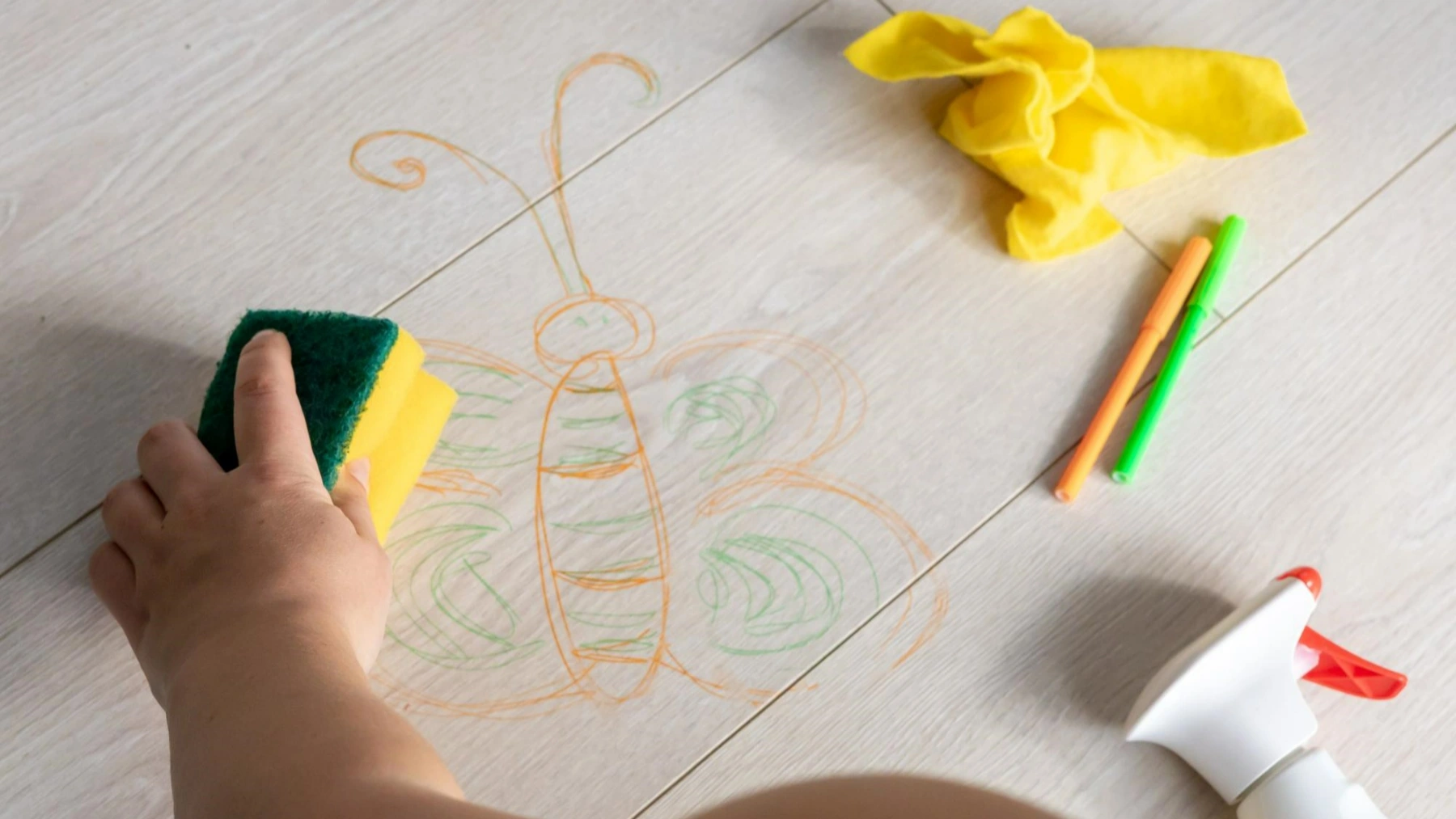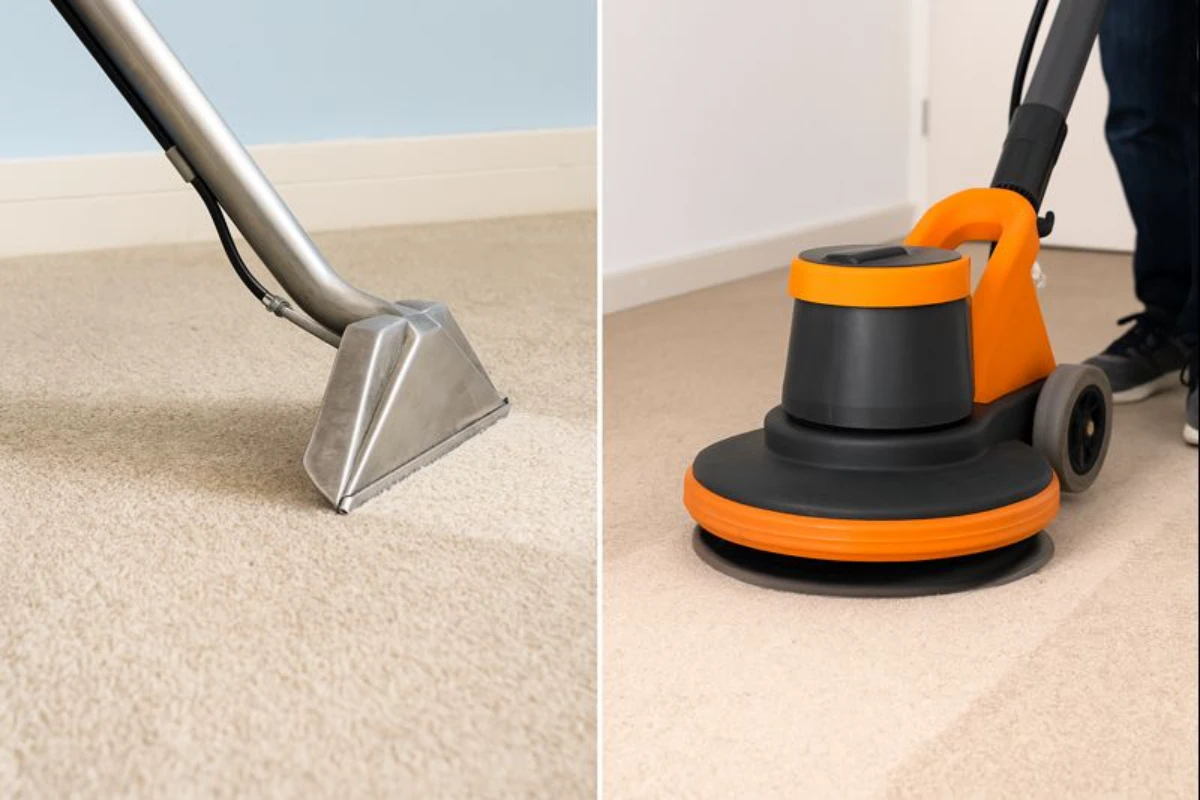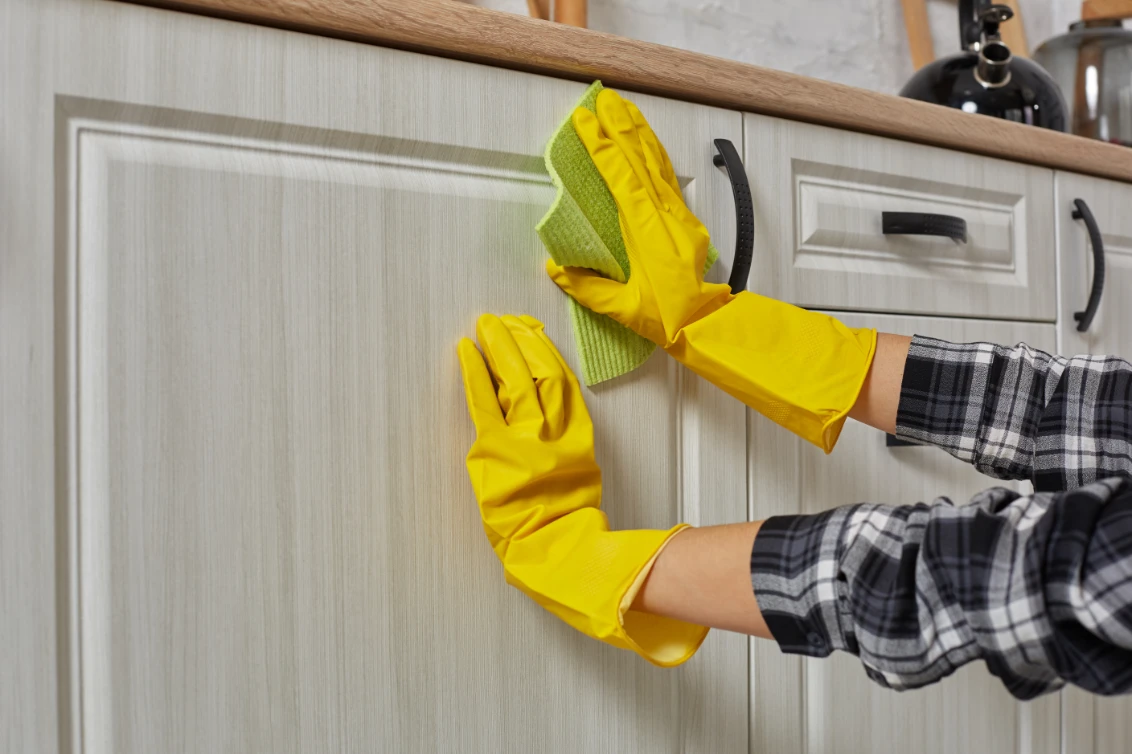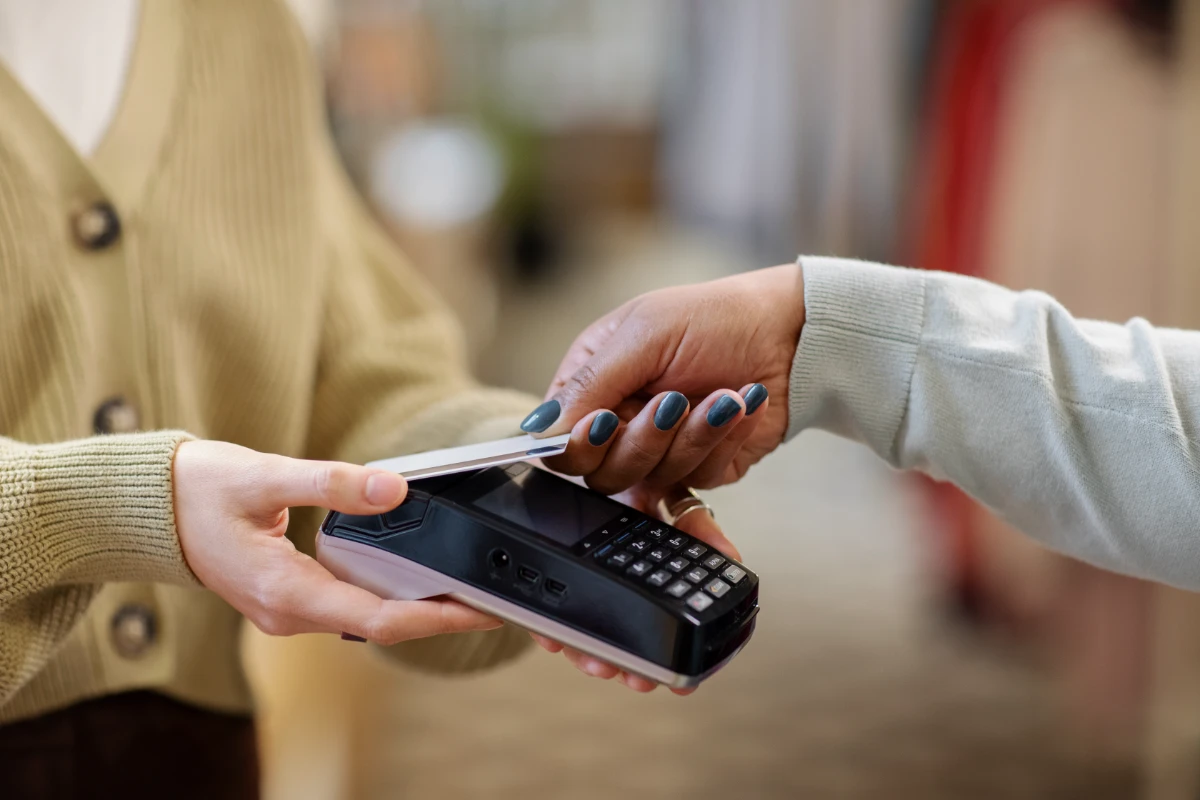Picture this: you’re staring at a bold, black permanent marker streak across your kitchen counter, or maybe your kid decided the living room wall was their canvas. My heart sank the first time I saw my toddler’s “artwork” on our couch. Permanent marker feels like a death sentence for your favorite surfaces, but I’ve learned it’s not as hopeless as it seems. Over the years, I’ve tackled these stains on everything from glass to fabric, and I’m here to share the tricks that worked for me. With stuff you probably have in your pantry or medicine cabinet, you can make those marks disappear. This guide is packed with practical, real-world advice for cleaning different surfaces, plus some hard-earned tips to save you from my mistakes. Let’s roll up our sleeves and get those stains gone.
Why Permanent Marker Feels So Permanent
I used to think “permanent” meant “game over,” but it’s not quite that dire. Permanent markers are tough because their ink is made to grip surfaces tightly, thanks to a mix of pigments and solvents that laugh in the face of plain water. I learned this the hard way when I tried scrubbing a marker stain off my whiteboard with a wet rag—spoiler: it didn’t budge. The key is knowing what you’re cleaning. Hard surfaces like glass or metal are easier because the ink sits on top, while porous stuff like wood or fabric soaks it up like a sponge. Don’t worry, though—I’ve got solutions for both. You’ll need to match your cleaning method to the surface, and I’ll walk you through what’s worked in my house, from quick fixes to last-ditch efforts.
Cleaning Hard, Non-Porous Surfaces
Hard surfaces like glass, plastic, or metal are my favorite to deal with because they’re forgiving. The ink doesn’t sink in, so with the right tools, you can wipe it away like it was never there. Here’s how I’ve handled these in my own home.
1. Glass and Mirrors

I once found marker scribbles on my bathroom mirror, courtesy of my five-year-old. Rubbing alcohol saved the day. I grabbed some from the first-aid kit, poured a bit onto a soft cloth, and wiped gently. The ink started melting away almost instantly. If the stain’s been there a while, let the alcohol sit for a minute before wiping—it needs a little time to break the ink down. If you’re out of alcohol, nail polish remover works too, but I only use it as a backup since it can mess with nearby paint or plastic. After cleaning, I always polish the glass with a microfiber cloth to get rid of streaks. Mirrors are the same deal—just be careful not to let liquid drip into the edges where it could mess with the backing.
2. Plastic Surfaces
Plastic’s a bit of a wild card because some types are tougher than others. I learned this when I tried cleaning a marker stain off a cheap plastic toy and nearly melted it with the wrong cleaner. My go-to now is the dry-erase marker trick. I scribble over the permanent marker with a dry-erase one, then wipe it off with a cloth—it’s like magic. The dry-erase ink has solvents that lift the permanent stuff. If that doesn’t work, hand sanitizer is my next move. I dab a little on, rub gently, and wipe it clean. Just don’t use acetone or nail polish remover on soft plastics—it can turn them cloudy or gooey. Always test on a hidden spot first, especially with something like a phone case or a favorite container.
3. Whiteboards

Oh, the whiteboard struggle. I’ve lost count of how many times someone in my house grabbed a permanent marker instead of a dry-erase one. The dry-erase trick works here too—just color over the stain and wipe it away. It’s saved my bacon during work-from-home meetings. For older marks, I use rubbing alcohol on a cloth, wiping gently to avoid wearing down the board’s surface. Afterward, I clean the whole board with a store-bought whiteboard cleaner to keep it slick and prevent future headaches. If you let the marker sit for weeks, it’s tougher, but don’t give up—keep at it with alcohol and patience.
4. Metal
I had a panic moment when marker ended up on my stainless steel fridge. Metal’s sturdy, but scratches are a real concern. I made a paste with baking soda and water, spread it on with a soft cloth, and rubbed gently. It took the stain right off without leaving a mark. If that doesn’t work, I’ve used WD-40—spray a tiny bit on a cloth, wipe the stain, and clean the area with soapy water to get rid of the oily residue. Don’t use anything abrasive like steel wool, especially on shiny surfaces. For painted metal, I stick to rubbing alcohol to avoid stripping the finish.
Dealing with Porous Surfaces
Porous surfaces are where I’ve had my biggest battles. The ink sinks in, and it feels like it’s mocking you every time you try to clean it. But I’ve found ways to win, even on tricky materials like wood or fabric. Here’s what’s worked for me.
1. Wood (Finished or Unfinished)

When my dining table got a marker makeover, I nearly cried. For finished wood like that, I start with rubbing alcohol on a cloth, dabbing gently to avoid messing up the varnish. It usually works if you catch it early. If the stain’s stubborn, I’ve used non-gel toothpaste—not the fancy whitening kind, just the basic stuff. I rub it in with a soft cloth, and it lifts the ink without too much hassle. For unfinished wood, like the raw edge of a bookshelf, sanding is my go-to. I use fine-grit sandpaper and work slowly, following the grain to avoid scratches. Afterward, I seal the wood to keep it protected. If it’s a fancy piece, I’d call a pro rather than risk ruining it.
2. Fabric and Upholstery

Fabric stains are my nemesis, especially after my kid got marker on our couch. For washable stuff like cotton shirts, I blot with rubbing alcohol or hand sanitizer, then toss it in the wash with cold water—hot water can set the stain. For delicate fabrics like silk, I mix equal parts white vinegar and water, dab gently, and rinse carefully. Carpets are trickier. I’ve had luck with alcohol-based hairspray—just spray, blot with a cloth, and clean with a carpet shampooer if needed. Always test on a hidden spot first, because I learned the hard way that some fabrics don’t play nice with alcohol. If it’s a pricey rug or sofa, I’d rather call a professional than risk a bigger mess.
3. Drywall
Drywall stains make me groan, especially in a rented place. I’ve had success with a damp magic eraser—lightly wet it and scrub gently. But go easy, because I’ve accidentally rubbed off paint before. For tougher stains, I mix non-gel toothpaste with a pinch of baking soda, apply it, and wipe with a damp cloth. It’s a bit of a workout, but it usually works. If the stain’s deep or the wall’s unpainted, repainting might be your only option. I use a stain-blocking primer first to keep the ink from bleeding through. If it’s a big job or you’re worried about damage, pros can handle it without risking your security deposit.
Tricky Surfaces That Need Extra Care
Some surfaces are just plain awkward to clean, either because they’re delicate or because they’re part of something you can’t replace. Here’s how I’ve dealt with a couple of these.

1. Leather
Leather’s a pain because it’s so easy to ruin. When marker ended up on my purse, I used a cotton swab with a tiny bit of rubbing alcohol, dabbing carefully. Afterward, I applied leather conditioner to keep it from drying out. Hairspray can work too—just spray it on a cloth and wipe quickly. Never soak leather, and stay far away from acetone, which can wreck the finish. If it’s a high-end item, I’d call a professional cleaner to be safe.
2. Electronics (Screens)
Getting marker off a phone or TV screen is stressful. I use a microfiber cloth with a tiny bit of rubbing alcohol, wiping gently and drying right away to avoid streaks. Never spray anything directly on the screen—liquid can sneak into places it shouldn’t. Acetone’s a no-go, as it can ruin screen coatings. If the stain’s on a keyboard, the same method works, but I’m extra careful around buttons or ports. Less liquid is always better with electronics.
How to Avoid This Mess in the Future

After a few marker disasters, I got smart about prevention. I keep permanent markers in a separate drawer from dry-erase or washable ones—trust me, it saves headaches. For kids, I only buy washable markers now; they’re not perfect, but they’re way easier to clean. I also use placemats or tablecloths on surfaces that seem to attract trouble, like my kitchen table. If you’ve got a whiteboard that’s always in use, a quick wipe with cleaner every week keeps it ready for action.
When It’s Time to Call the Experts
Sometimes, you’re out of your depth—trust me, I’ve been there. If the stain won’t budge, or you’re dealing with something pricey like a leather couch or an antique table, it’s worth calling a professional. They’ve got tools and cleaners I can only dream of, and they can tackle big jobs like a marker-covered office wall without breaking a sweat. A professional commercial cleaning company can make your space look brand-new, and it’s a lifesaver when you’re short on time or patience.




